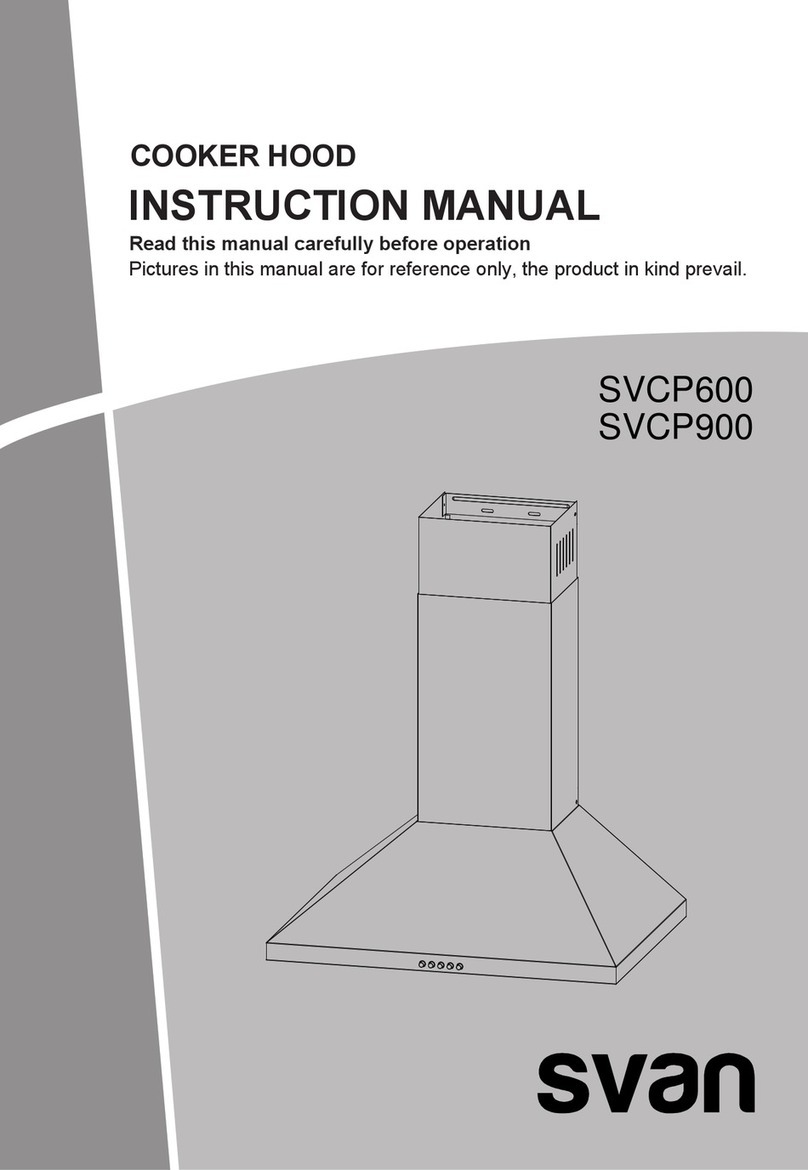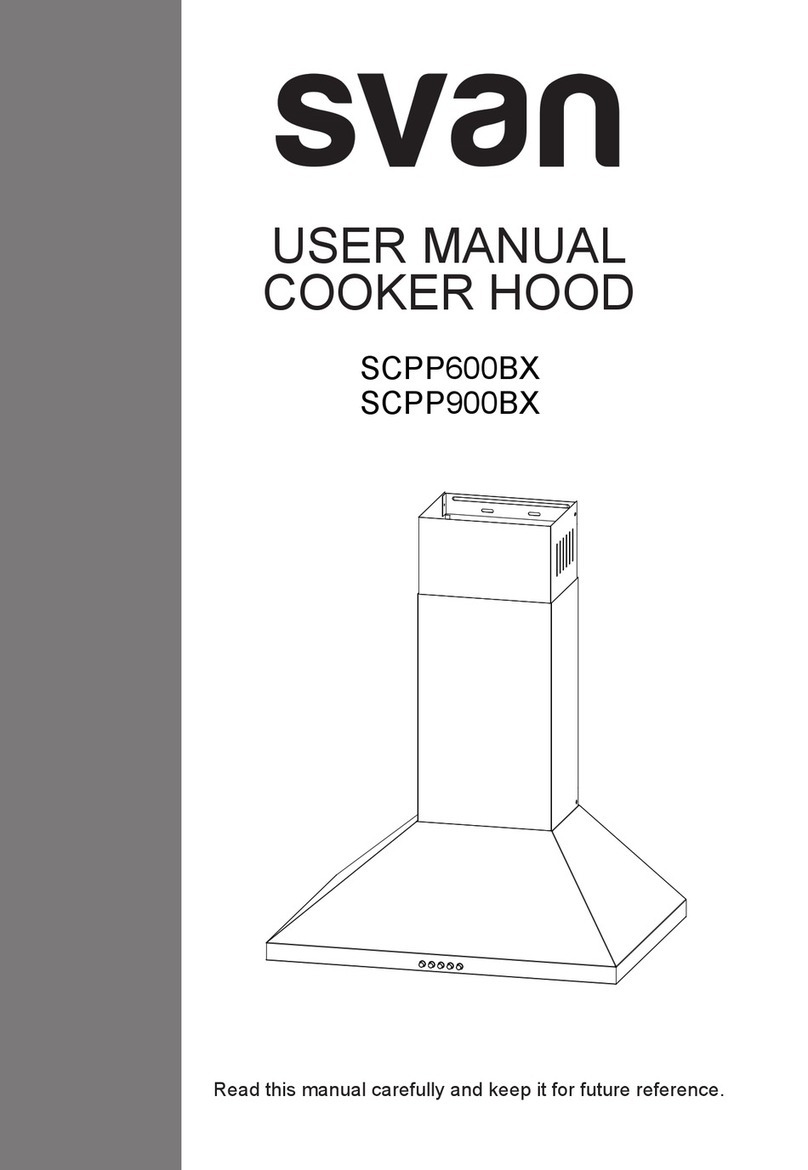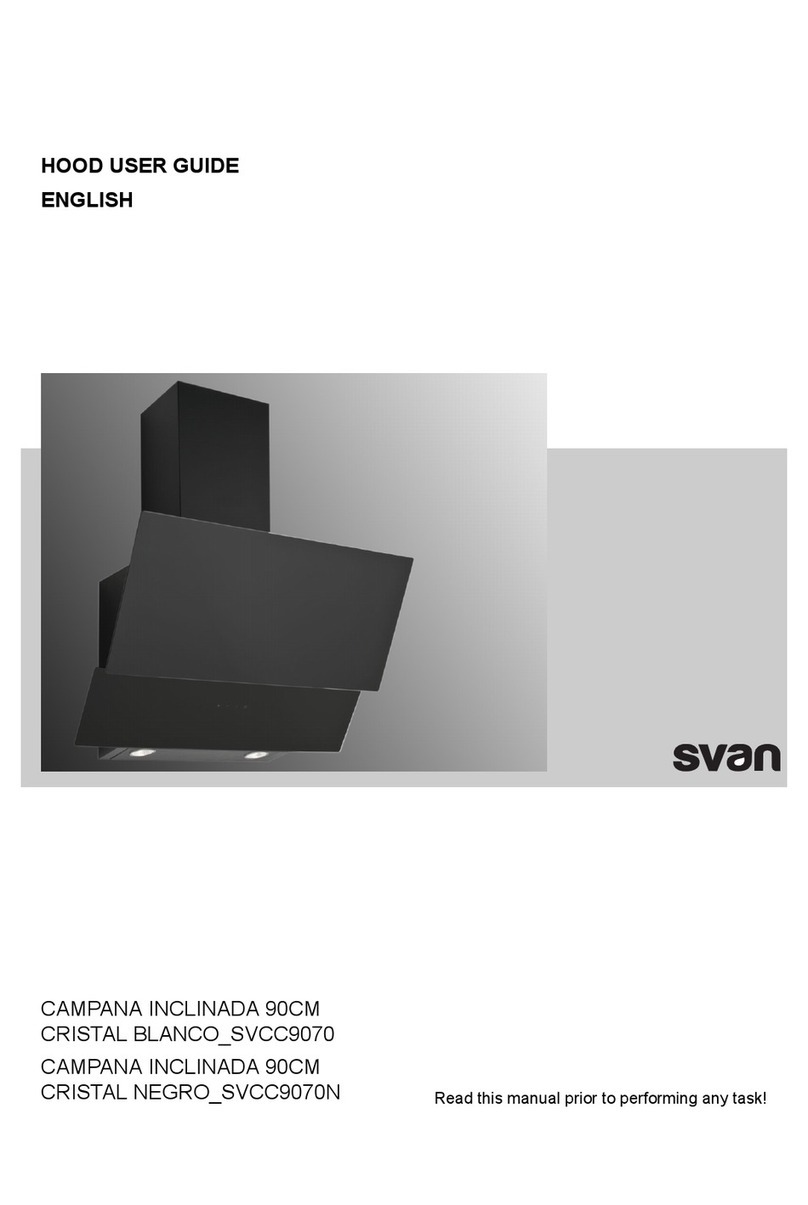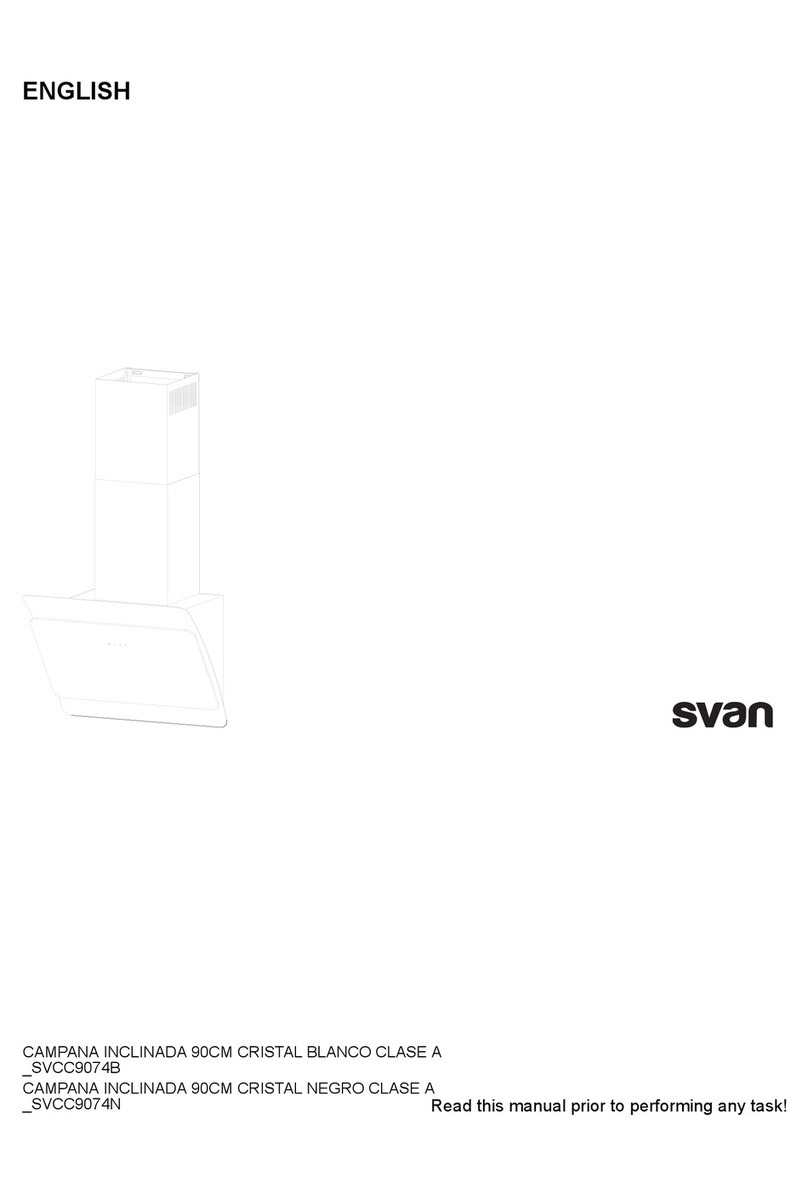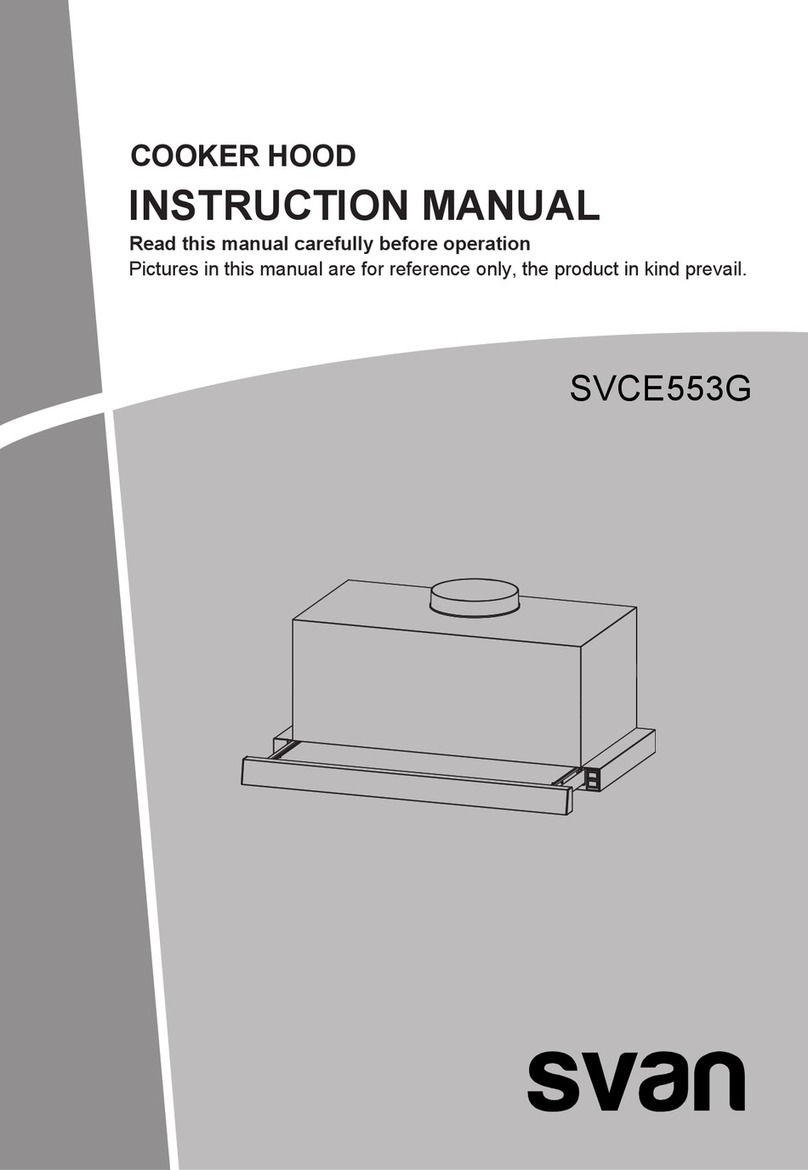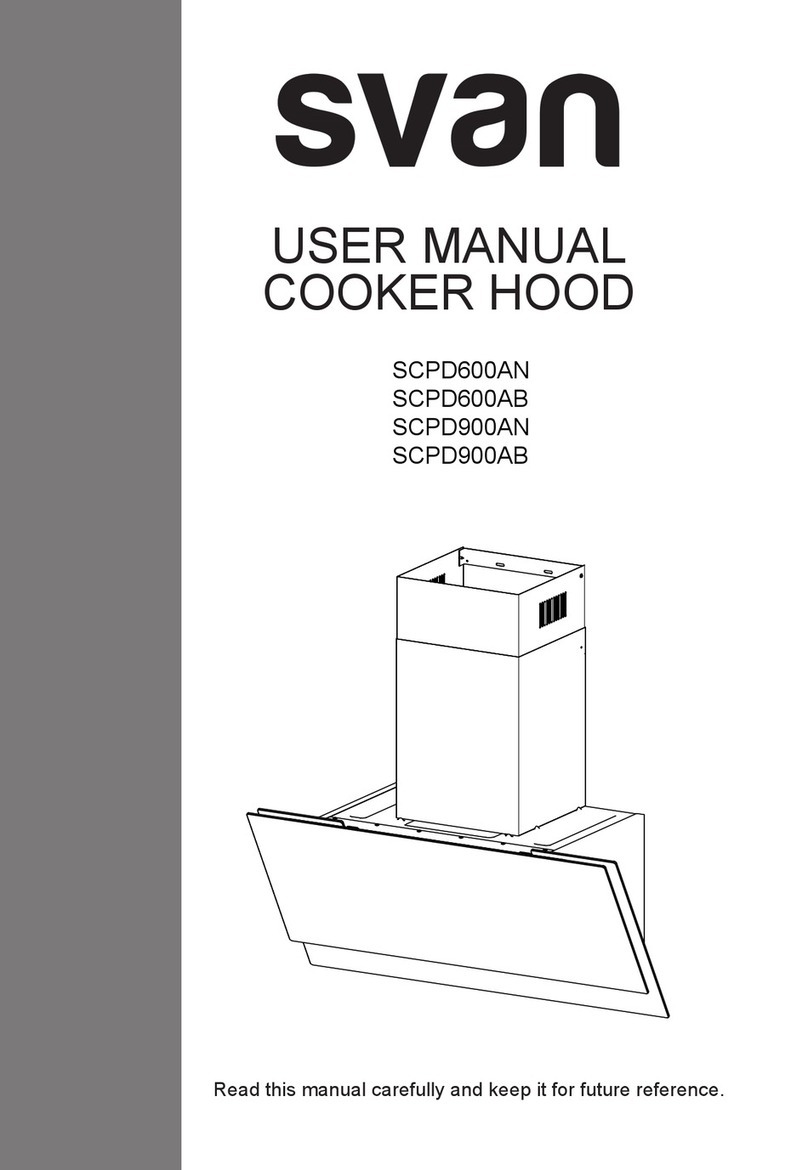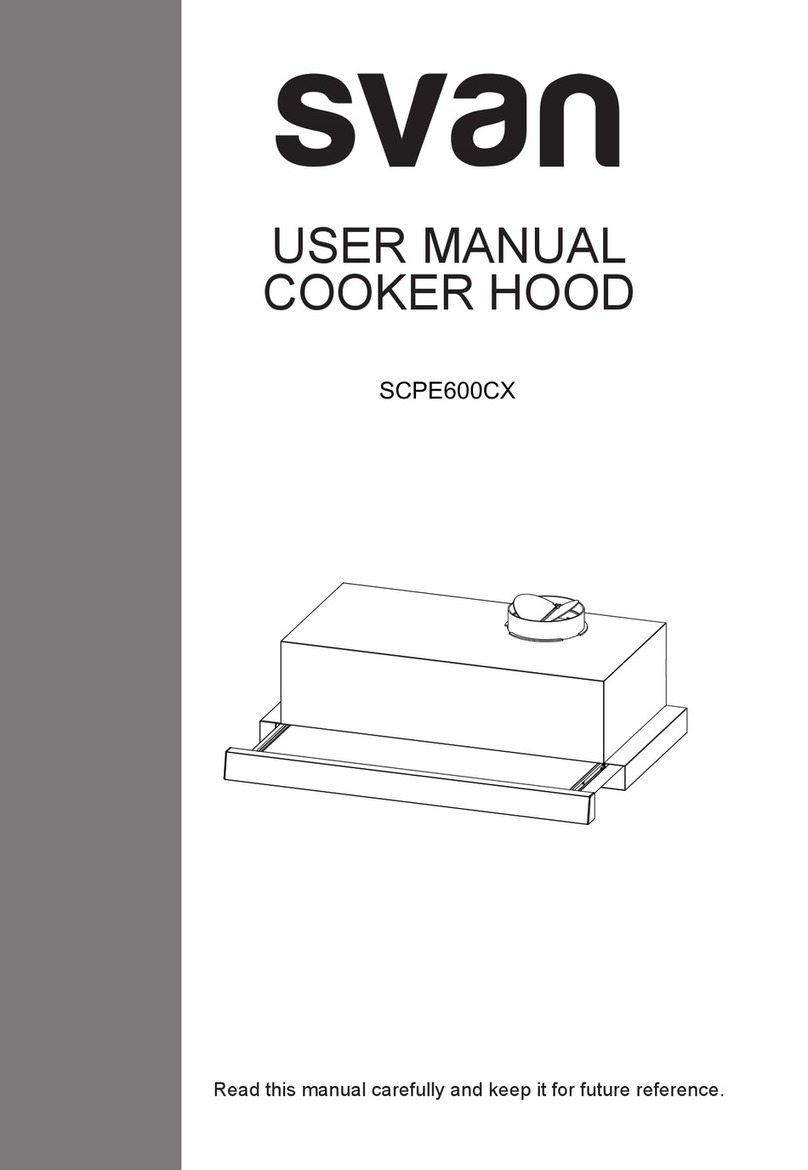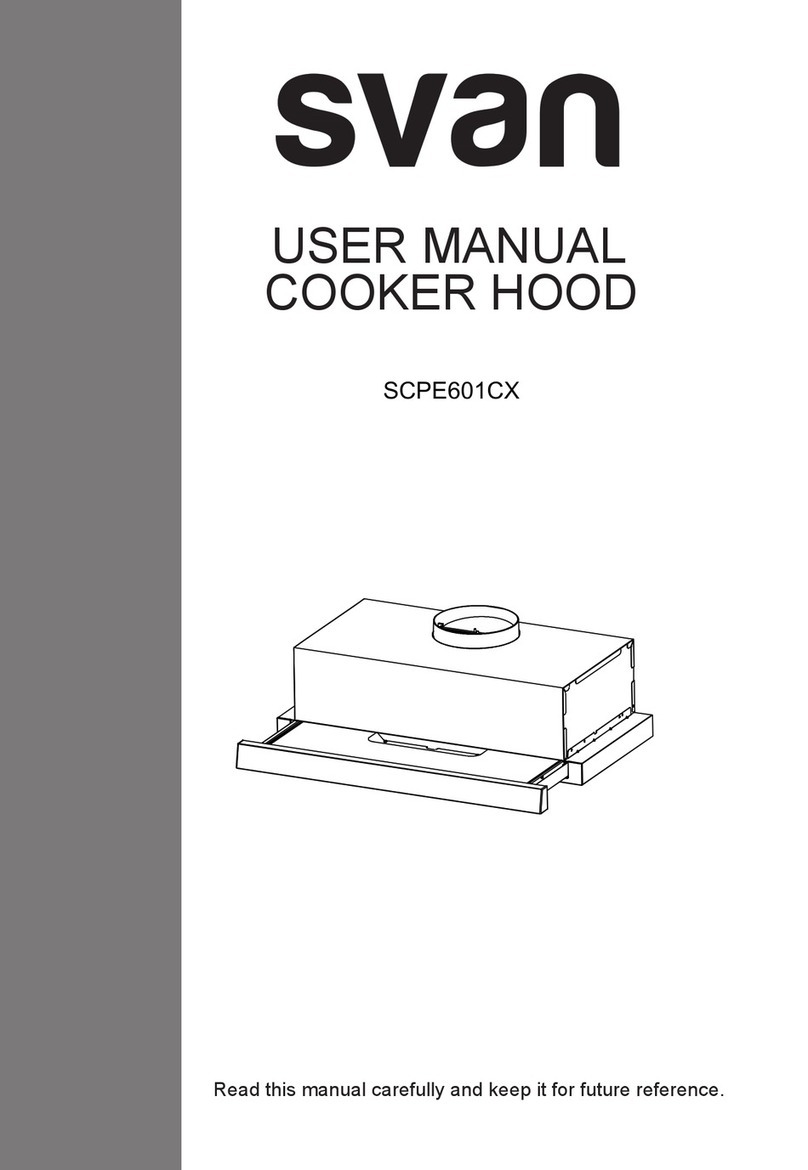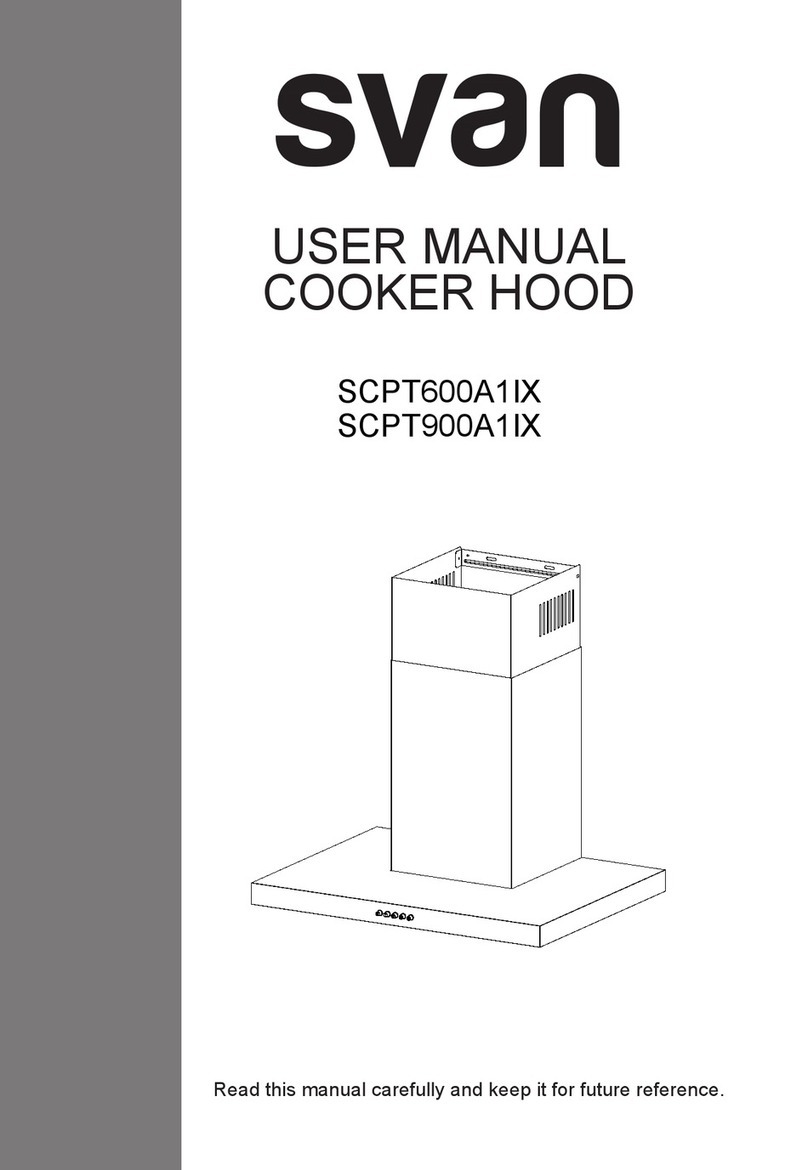
nIf your product's periodic cleaning is not made in a timely
manner, it could pose risk of fire.
nDe-energize the appliance before any maintenance operations.
(Plug off the appliance or turn off the main switch.)
nWhen electric cooker hood and devices fed with energies other
than electricity operate simultaneously, the negative pressure
in the room must not exceed 4 Pa ( 4 X 10 bar ).
nGas or fuel oil burning appliances, such as room heaters,
which share the same environment with your product, must be
fully insulated from the exhaust of this product or they must be
hermetical.
nWhen you make a flue connection for your product, use pipes
with a diameter of 150mm or 120 mm. The length of the duct
connection as well as the number of elbows must be as min-
imum as possible.
nChildren must not play with the appliance.
nFor your safety, use ”MAX 6 A” fuse in the hood system.
nSince the packing materials could be dangerous, keep them
away from children.
nIf the feeder cable is damaged, it must be replaced by its man-
ufacturer or its authorized technical service or any other per-
sonnel qualified at the same level, in order to avoid any dan-
gerous situation.
nIn case of any deflagration, de-energize the cooker hood and
cooking appliances, and cover the flame. Never use water to
extinguish the fire.
nWhen cooking appliances are in operation, their accessible
parts could be hot.
nThis appliance is not intended to be used by people with phys-
ical, sensory and mental disabilities (including children) or
those who have not adequate experience and knowledge
regarding its use, unless they are under the supervision of a
person responsible for the safety of the appliance.
nAfter the installation of the hood, the minimum distance must
be 65 cm between the product and any electric cooker; and 75
cm between it and any gas ranges or cookers burning other
fuels.
nOutput of the hood must not be connected to air ducts, where
there exist another smokes.
nYou must be careful when using the appliance spontaneously
with other appliances (e.g. gas, diesel fuels, coal, wood, etc.
burning heaters, shower heaters), which use the same air in
the same environment. Attention must be paid when using
them simultaneously. It is because the hood could adversely
affect the combustion, by discharging the ambient air.
nThis warning does not apply to uses without flue.
nWhen electric cooker hood is used simultaneously with devices
that use gas or other fuels, there must be sufficient ventilation
in the room (might not apply to devices that discharges the air
back into the room).
WARNING AND SAFETY PRECAUTIONS
07.10.2019FREE FLOW Hoods6







